Big assault mounted on Queen Victoria Markets - Take note

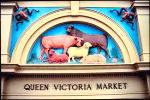 "The redevelopment and remodelling of the Queen Victoria Market (QVM) plus changes in its functions proposed by the City of Melbourne, led by the Lord Mayor Robert Doyle, should be ringing alarm bells amongst Melburnians. This is one of the biggest assaults ever mounted on the QVM in the history of Melbourne." (Julianne Bell, Protectors of Public Lands Victoria Inc.)
"The redevelopment and remodelling of the Queen Victoria Market (QVM) plus changes in its functions proposed by the City of Melbourne, led by the Lord Mayor Robert Doyle, should be ringing alarm bells amongst Melburnians. This is one of the biggest assaults ever mounted on the QVM in the history of Melbourne." (Julianne Bell, Protectors of Public Lands Victoria Inc.)
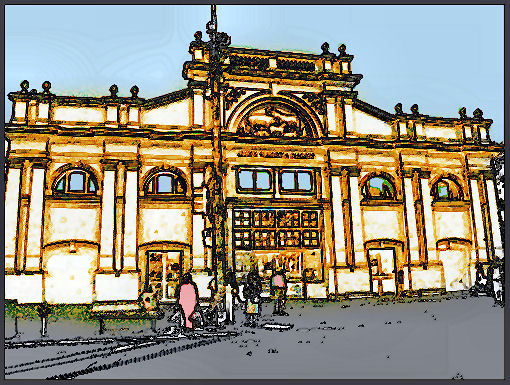
Report on Queen Victoria Market and Development Proposals by City of Melbourne [1]
In the early 1970s the City of Melbourne, with the support of the Victorian State Government, proposed to demolish the QVM and replace it with a combined Trade Centre, office and hotel. The Save the Victorian Market Committee was formed. Then Norm Gallagher and the Builders Labourers Federation (BLF) . put Green Bans on the demolition of the QVM and guaranteed its survival from demolition and redevelopment. The QVM was put on the Historic Buildings Register. There is talk of nominating the site for World Heritage and it certainly fills an important place of Melbourne’s cultural heritage. Twenty years later, prior to his death in 2006, John Cummins (a former BLF official and then CFMEU official) gave market stall holders assurances that the QVM would be defended by the CFMEU should there be any retreat from agreements to save the Place. (This information paraphrases quotes from Dave Kerin’s history of the BLF.)
I have not analysed in detail the destruction of heritage should the City of Melbourne’s plans be implemented. It is certain that, however, that the current plans will destroy the social heritage of the QVM, maintaining the sheds as a kind of “Disneyland” market, which in the long term would not be sustainable
I thought it useful to look, firstly, at the fact that the QVM is possibly one of the biggest suppliers of fresh and processed food, as well as other retail items such as clothing, in the inner Metropolitan area. Dr Miriam Faine, who is a Convenor of the Friends of OVM Facebook group and who is alarmed at the changes proposed, says that the QVM currently supports traders who will lose their business if the development proceeds; offers a voice to market customers who shop regularly at the market (and are not 'visitors' but part of the market community); preserves the market as an every day shopping space for the people of Melbourne; and, she argues, provides a traditional market model with many small independent traders competing on freshness, variety, value and sustainability.
To the Lord Mayor and Councillors the market is just a show piece and a tourist attraction as they appear to have no clues that the market is an integral part of people's lives and plays an important part in supplying the metropolis with food. As far as I know the Lord Mayor of Melbourne does not live in the municipality of Melbourne and possibly has no experience of shopping for the family every week in the QVM.
The QVM is not just a market for the municipality of Melbourne but for a huge radius of suburbs. One reason that the Market serves this vast hinterland is because of the parking availability at the Market and also in the streets around, although complaints are made that charges are excessive compared to other shopping centres. There are 700 spaces at the QVM plus another 500 which are now under threat in the surrounding streets. It would be disastrous if they were removed. See the web page - http://au.parkopedia.com/parking/carpark/queen_victoria_market/3000/melbourne/ - which provides a run down of all available parking within reasonable reach for QVM patrons. There is certainly a case for retaining cheap parking easily accessible for QVM patrons, within the context of a broader objective of maximising space efficient and sustainable modes.
Public transport advocate Ian Hundley has made a great contribution to this report. His comments concerning transport have been included below.
With regard to the count of daily traffic numbers over the last 10 years for major arterial roads (Dudley Street, Peel Street, Victoria Street, Elizabeth Street) near to or abutting the QVM, it appears that these numbers have been static, or even declined, during this period. This is welcome news and confirms that Melbourne really only works as well owing to the fact that a substantial proportion of visitors travel by sustainable means. This is not the case with most of the suburban activity centres which are highly car dependent and face increased road traffic congestion as a consequence. The tram lines mentioned here in relation to the QVM connect with north and western suburbs.
An emerging threat for the north-west part of the City of Melbourne is the Victorian State Government's proposed Western Distributor which includes a feeder into the Melbourne CBD from the Westgate Freeway. Ian Hundley comments that he is of the view that, as this is a Transurban inspired toll road, they might well be looking to maximise road traffic numbers in this area.
We understand that daily visitors to/users of the market vary between about 22,000 and 32,000 with the greatest numbers being on Saturdays. Furthermore we understand that the QVM administration reports that a phenomenal ten (10) million people visit the markets every year. We do not know how many people visit the QVM as their one and only destination or how many people have multiple destinations on journeys within the CBD, one of which is the QVM.
It appears that the QVM, as currently configured, does not cater very well for the many patrons who use shopping trolleys, a design issue mainly. It is also an issue for public transport users in the area with no services on Elizabeth Street and Victoria Street being low floor. This will improve over time, but it is not happening quickly enough.
We consider it would help to get many more people onto public transport if a number of problems were addressed. For example, the Victoria Street tram corridor is not continuous which makes it difficult for quite a few people and there is no ready access to North Melbourne station from the QVM. Also, low floor trams would be a plus, especially for shoppers at QVM.
Finally with regard to transport and planning issues, I have heard that plans are being formulated by the City of Melbourne for Franklin Street to be closed; for QVM car parking to be removed; and for three 50 storey tower blocks to be built on the site. Franklin Street provides very useful access from Victoria Street through to the RMIT complexes on Swanston Street and through to the legal world in Lonsdale Street and William Street. Predictions are there could be disastrous traffic congestion resulting from the Franklin Street closure.
The QVM is seen as of central importance to people's lives enabling them to live within strict budgets. The food prices are the most reasonable in the metropolis. One is able to buy food items - costs go down in seasons of plenty. Also prices go down close to closing times so traders can dispose of goods. The QVM does not serve just residents in surrounding suburbs but also the international student population increasingly living in high rise apartments in the city. If a large part of the QVM is closed down then where will numbers shop? There are few Big Block Coles and Woolworths in the city. Many of the thousands of tertiary students who live in inner Melbourne seldom dine out. They need to watch their budget and want to shop locally and economically to cook at home.
Another point is that numbers of stall holders provide surplus food to “Second Bite” and charities so these services would be lost if the QVM trading were to be drastically reduced in size, as Lord Mayor Doyle’s “redevelopment” proposes.
The “deli” shops specialise in ethnic foods. The Greek deli shops, for instance, have a huge number of clients from the Greek Community from all over Melbourne. .
Also interesting to note would be just how many top City restaurants and cafes obtain their food from the market. I used to go to the organic foods section and encountered many restaurant owners/chefs purchasing fresh supplies.
My parents used to go every week from Camberwell for about 50 years! And I used to go to the QVM by tram when living in Parkville and North Carlton for many years. Many Melburnians remain loyal to certain stall holders and keep up patronage for a lifetime.
Queen Victoria Market is very special. For many years it been an effective antidote to mega sized, corporate retail food distribution and it needs to be retained as such for the benefit of the growing numbers of local, inner city residents including students, the loyal shoppers from the middle suburbs, as well as the visitors to the city.
There is a related topic which needs to be dealt with separately. It is difficult to imagine where fresh food will be grown given the rapid loss of arable food producing land with the spread of housing developments. The question arose some years ago when the Brumby Government extended the urban growth boundary to allow spread of residential housing into arable farming land. . Melbourne is now heading for 8 million population. Will we soon be reliant on imported food?
Signed:
Julianne Bell
Secretary
Protectors of Public Lands Victoria Inc.
PO Box 197
Parkville 3052
Mobile: 0408022408
Date: 3 July 2015
NOTES
This article is slightly represented from the original letter signed by Julianne Bell for Protectors of Public Lands Victoria Inc., which was entitled: "REPORT ON QUEEN VICTORIA MARKET AND DEVELOPMENT PROPOSALS BY THE CITY OF MELBOURNE."

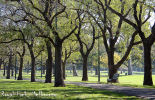 This is a report on Transurban and the Western Distributor and the Defence of Our Parks from Commercial Development and Takeover by Park Furniture. It also contains details of upcoming Transurban: Western Distributor - Information sessions through the inner west in May and June.
This is a report on Transurban and the Western Distributor and the Defence of Our Parks from Commercial Development and Takeover by Park Furniture. It also contains details of upcoming Transurban: Western Distributor - Information sessions through the inner west in May and June.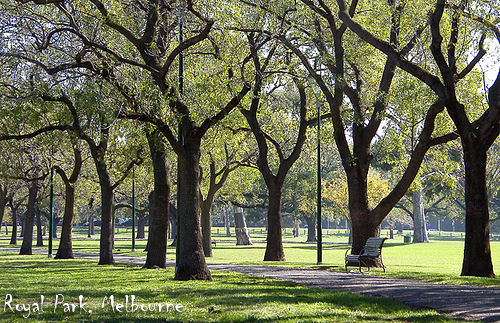
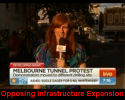 On April 4, 2015 the ABC and other new services reported on fierce 'clashes' as a newly formed organisation turned up in large numbers to oppose rallies in several states by a political group called Reclaim Australia.
On April 4, 2015 the ABC and other new services reported on fierce 'clashes' as a newly formed organisation turned up in large numbers to oppose rallies in several states by a political group called Reclaim Australia. 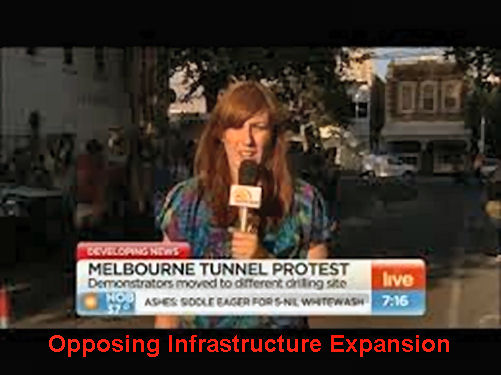 Oxford Dictionary Definitions: (Additional observations in bold)
Oxford Dictionary Definitions: (Additional observations in bold)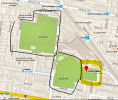 As if the development and construction of 590 Orrong Road isn't enough, residents at 'ground zero' are now facing compulsory acquisition of their homes. They need your help today. You will also be dismayed to learn that Victory Square is at risk of being yet another sports oval in an area so devoid of passive recreation space. When is enough enough?
As if the development and construction of 590 Orrong Road isn't enough, residents at 'ground zero' are now facing compulsory acquisition of their homes. They need your help today. You will also be dismayed to learn that Victory Square is at risk of being yet another sports oval in an area so devoid of passive recreation space. When is enough enough?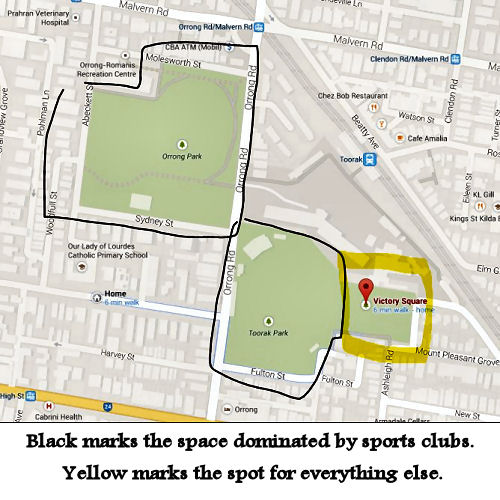 As if the development and construction of 590 Orrong Road isn't enough, residents at 'ground zero' are now facing compulsory acquisition of their homes.
As if the development and construction of 590 Orrong Road isn't enough, residents at 'ground zero' are now facing compulsory acquisition of their homes.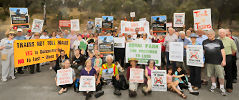 It is believed that up until two weeks post election 457 visa workers from Spain and their families were still arriving to work on East West Link. However the latest news is that the Authority behind the East West Link is being disbanded by the Andrews Government. There are, however, still many issues left over from the Napthine Government and East West Link that need to be carefully monitored in the area of environment, democracy and heritage.
It is believed that up until two weeks post election 457 visa workers from Spain and their families were still arriving to work on East West Link. However the latest news is that the Authority behind the East West Link is being disbanded by the Andrews Government. There are, however, still many issues left over from the Napthine Government and East West Link that need to be carefully monitored in the area of environment, democracy and heritage.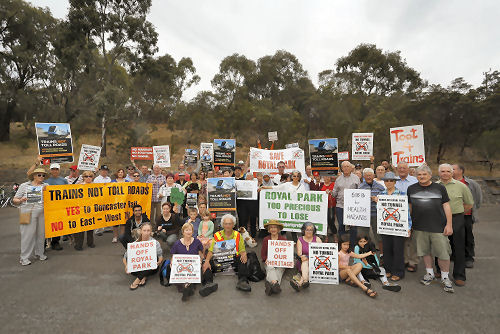 East West Link News: The good news received yesterday is that Linking Melbourne Authority responsible for the East West Link is being disbanded by the Andrews Government."Authority behind the East West Link ditched" by Clay Lucas. http://www.theage.com.au/victoria/authority-behind-east-west-link-ditched-20150107-12jg0e.html
East West Link News: The good news received yesterday is that Linking Melbourne Authority responsible for the East West Link is being disbanded by the Andrews Government."Authority behind the East West Link ditched" by Clay Lucas. http://www.theage.com.au/victoria/authority-behind-east-west-link-ditched-20150107-12jg0e.html  This article thanks all who attended the celebration today (7 December 2014) to give thanks to the incoming Labor Government and to all who have campaigned for years to save Royal Park and the Zoo from certain destruction should the East West Link be constructed. The article also contains a photo of a concerning note left by East West Connect for a resident, requesting some kind of ongoing involvement in the link.
This article thanks all who attended the celebration today (7 December 2014) to give thanks to the incoming Labor Government and to all who have campaigned for years to save Royal Park and the Zoo from certain destruction should the East West Link be constructed. The article also contains a photo of a concerning note left by East West Connect for a resident, requesting some kind of ongoing involvement in the link.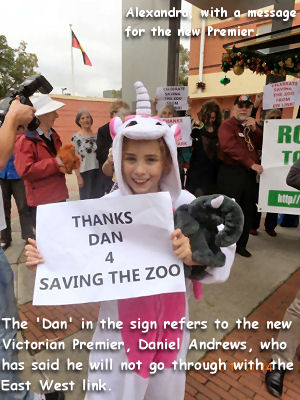 Note the photo of a child, Alexandra, dressed as a unicorn holding a wombat with the message : "Thanks Dan 4 Saving the Zoo"
Note the photo of a child, Alexandra, dressed as a unicorn holding a wombat with the message : "Thanks Dan 4 Saving the Zoo"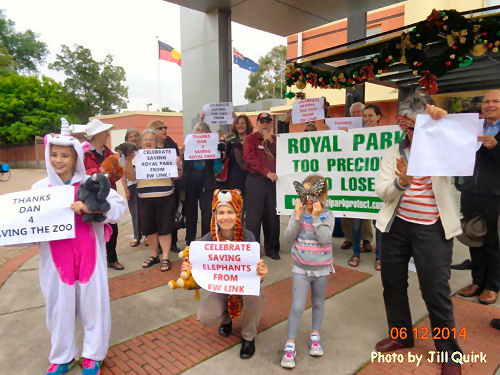
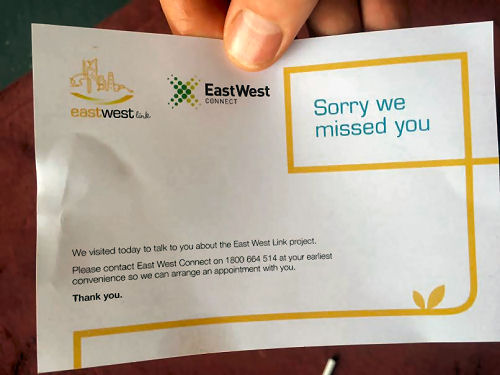
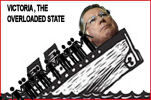 Rapid population growth is political poison, and has brought down a second Victorian Government in four years. In the past decade Australia's migration rate more than doubled. The greatest consequences of this dramatic increase have been in Melbourne, which started growing by more than 200 people a day, 1500 each week, 75,000 each year.
Rapid population growth is political poison, and has brought down a second Victorian Government in four years. In the past decade Australia's migration rate more than doubled. The greatest consequences of this dramatic increase have been in Melbourne, which started growing by more than 200 people a day, 1500 each week, 75,000 each year.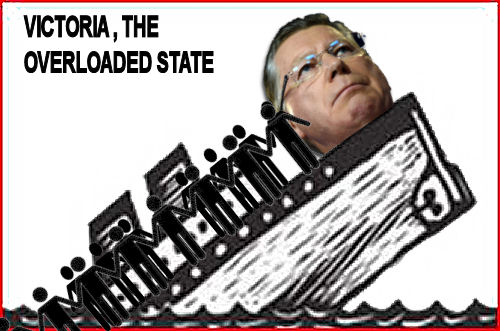 But the incoming Liberal Government did not understand why it had won, and fell for the trap of believing its own propaganda. Melbourne's population growth continued apace, and Ted Baillieu said strong population growth was vital to the state's economic future. He did not last long.
But the incoming Liberal Government did not understand why it had won, and fell for the trap of believing its own propaganda. Melbourne's population growth continued apace, and Ted Baillieu said strong population growth was vital to the state's economic future. He did not last long.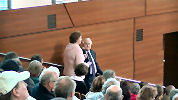
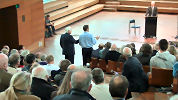 Audience with open microphone, commenting and asking questions of Kelvin Thomson and Mayor Doyle at the "Big Population Debate" on 13 October 2014 at Deakin Edge, Federation Square, which attracted well over 200 people from peak ratepayers, planning and environmental groups. It culminated in a call by Mary Drost, of Planning Backlash, for a referendum on Australia's population growth. Both Kelvin Thomson and Lord Mayor Doyle agreed that this was a good idea.
Audience with open microphone, commenting and asking questions of Kelvin Thomson and Mayor Doyle at the "Big Population Debate" on 13 October 2014 at Deakin Edge, Federation Square, which attracted well over 200 people from peak ratepayers, planning and environmental groups. It culminated in a call by Mary Drost, of Planning Backlash, for a referendum on Australia's population growth. Both Kelvin Thomson and Lord Mayor Doyle agreed that this was a good idea.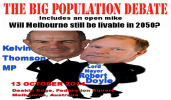 Video inside: The Big Population Debate at the Deakin Edge in Federation Square, Melbourne, on October 13, 2014, between Kelvin Thomson and Lord Mayor Robert Doyle, was a fantastic success in terms of numbers and outcome. Given the utter inertia of political process in responding to this democratic emergency, Mary Drost's call for a Referendum on Australia's Population Growth was a great idea to go forward. With both Kelvin Thomson and Mayor Doyle agreeing that a referendum on population is a good idea, Victorians and other Australians have something concrete to go forward with. The film here is of the debate. The referendum is on the open mike section, which is the next film that will be published. The debate embedded here showed that Mayor Doyle really doesn't have a handle on the issue at all, except as a loyal servant to the business end of growth. Kelvin Thomson's ability to debate the subject would make him a world leader in this area. This is a very important and historic record. Congratulations to Mary Drost of Planning Backlash for making it happen. Sheila Newman produced the video.
Video inside: The Big Population Debate at the Deakin Edge in Federation Square, Melbourne, on October 13, 2014, between Kelvin Thomson and Lord Mayor Robert Doyle, was a fantastic success in terms of numbers and outcome. Given the utter inertia of political process in responding to this democratic emergency, Mary Drost's call for a Referendum on Australia's Population Growth was a great idea to go forward. With both Kelvin Thomson and Mayor Doyle agreeing that a referendum on population is a good idea, Victorians and other Australians have something concrete to go forward with. The film here is of the debate. The referendum is on the open mike section, which is the next film that will be published. The debate embedded here showed that Mayor Doyle really doesn't have a handle on the issue at all, except as a loyal servant to the business end of growth. Kelvin Thomson's ability to debate the subject would make him a world leader in this area. This is a very important and historic record. Congratulations to Mary Drost of Planning Backlash for making it happen. Sheila Newman produced the video.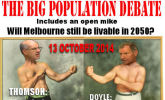 I must start by extending a vote of appreciation to the Mayor for agreeing to debate population growth with Kelvin Thomson. Both debaters and the Moderator respectfully acknowledged the original owners of the land upon which the debate took place, the Wurundjeri.
I must start by extending a vote of appreciation to the Mayor for agreeing to debate population growth with Kelvin Thomson. Both debaters and the Moderator respectfully acknowledged the original owners of the land upon which the debate took place, the Wurundjeri.
 UPDATE:
UPDATE: 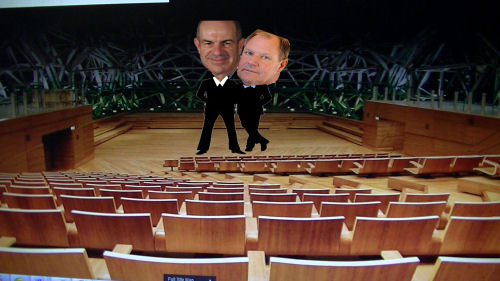 The rate of population growth affects people's lives by stressing services, infrastructure, and putting ever-increasing pressure on Victoria's (and Australia's) fragile environment. Residents' action groups, environment groups, flora and fauna protection groups all demonstrate and otherwise engage frequently to try and stop the brutal impacts of state-planned overpopulation on democracy, property rights, and the built and natural environment of this state. Our environmental and biodiversity protection laws are inadequate in the face of the growth onslaught.
The rate of population growth affects people's lives by stressing services, infrastructure, and putting ever-increasing pressure on Victoria's (and Australia's) fragile environment. Residents' action groups, environment groups, flora and fauna protection groups all demonstrate and otherwise engage frequently to try and stop the brutal impacts of state-planned overpopulation on democracy, property rights, and the built and natural environment of this state. Our environmental and biodiversity protection laws are inadequate in the face of the growth onslaught. 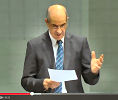
 Video and Transcript inside: Federal Labor Member for Wills, Kelvin Thomson, spoke in Parliament against the signing of contracts and the construction of the East West Link Road Tunnel, also known as the Royal Park Freeway. Before the election the Liberals were in favour of independent cost benefit analysis for major projects, yet now in government, they are avoiding undertaking one for the East-West Link in Melbourne, the freeway through Royal Park. Mr Thomson wrote to the Minister for Infrastructure and Regional Development, and his Parliamentary Secretary on 27th August, to seek appropriate and publicly transparent economic modelling, environmental assessment and community consultation before tens of billions of dollars are spent on a tunnel that makes no economic sense, will damage our environment and which will hurt local communities. (23/9/14). Note that Kelvin will be
Video and Transcript inside: Federal Labor Member for Wills, Kelvin Thomson, spoke in Parliament against the signing of contracts and the construction of the East West Link Road Tunnel, also known as the Royal Park Freeway. Before the election the Liberals were in favour of independent cost benefit analysis for major projects, yet now in government, they are avoiding undertaking one for the East-West Link in Melbourne, the freeway through Royal Park. Mr Thomson wrote to the Minister for Infrastructure and Regional Development, and his Parliamentary Secretary on 27th August, to seek appropriate and publicly transparent economic modelling, environmental assessment and community consultation before tens of billions of dollars are spent on a tunnel that makes no economic sense, will damage our environment and which will hurt local communities. (23/9/14). Note that Kelvin will be 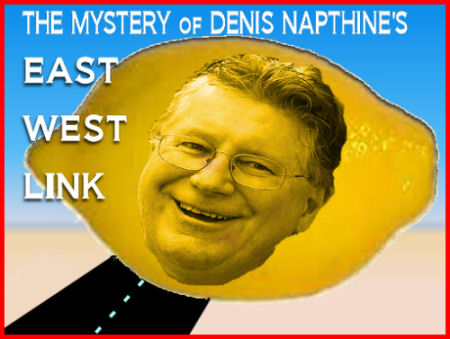

 The farce of the 'world's most livable city'. Overpopulation drives both sides of parliament to attack each other publicly but privately to support draconian reconstruction of Melbourne, because they have created a situation that makes it inevitable if they don't stop population growth. Nonetheless, this speech by Ms Kanis, the ALP Member for Melbourne, on 4 September 2014, still picks up the Government on the detail of the mammoth assault on democracy and the public purse that is the proposed East West Link. Following on her speech, Liberal Member, Ms Ryall of Mitcham, constructs a half-knitted jumper of motherhood cliches about 'our children's future', before abandoning it to choose attack as the best means of defense, evoking the equally scandalous Desal Plant of the recent Labor Government. The 'world's most livable city' is, of course, a cynical business marketing construction designed to give authority to the forces overseeing the increasingly brutal deconstruction of Victoria's democracy.
The farce of the 'world's most livable city'. Overpopulation drives both sides of parliament to attack each other publicly but privately to support draconian reconstruction of Melbourne, because they have created a situation that makes it inevitable if they don't stop population growth. Nonetheless, this speech by Ms Kanis, the ALP Member for Melbourne, on 4 September 2014, still picks up the Government on the detail of the mammoth assault on democracy and the public purse that is the proposed East West Link. Following on her speech, Liberal Member, Ms Ryall of Mitcham, constructs a half-knitted jumper of motherhood cliches about 'our children's future', before abandoning it to choose attack as the best means of defense, evoking the equally scandalous Desal Plant of the recent Labor Government. The 'world's most livable city' is, of course, a cynical business marketing construction designed to give authority to the forces overseeing the increasingly brutal deconstruction of Victoria's democracy. Message from YCAT and the RAT re the outrageous proposed acquisition of property by the State Government in the path of the East West Link and a meeting organised for affected residents and traders. Education session with lawyers on issues of compulsory acquisition.
Message from YCAT and the RAT re the outrageous proposed acquisition of property by the State Government in the path of the East West Link and a meeting organised for affected residents and traders. Education session with lawyers on issues of compulsory acquisition.

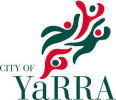 21 July 2014. Yarra City Council has voted unanimously to join Moreland Council in seeking a judicial review of the Minister for Planning’s approvals for the East West Link and the assessments committee’s recommendation to the Minister.
21 July 2014. Yarra City Council has voted unanimously to join Moreland Council in seeking a judicial review of the Minister for Planning’s approvals for the East West Link and the assessments committee’s recommendation to the Minister.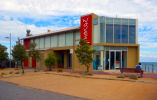

 If you are concerned about 457 visas, local unemployment and population growth, planning issues, over-development, and the loss of wildlife and residents rights in Frankston and the Peninsula, please come along to this meeting of Victoria First. Special Guest Speaker will be Public Transport advocate Mr. Ian Hundley. Ian Hundley will speak on "The transport crisis in the Frankston area: issues of economy, ecology and social connectedness." This public meeting will be from 2-4pm at the Frankston Life Saving Club, on Frankston Foreshore. (More details of location inside article.) There will be opportunities to make statements from the floor if you let the organisers know in advance. Contact 03 9350 5777.
If you are concerned about 457 visas, local unemployment and population growth, planning issues, over-development, and the loss of wildlife and residents rights in Frankston and the Peninsula, please come along to this meeting of Victoria First. Special Guest Speaker will be Public Transport advocate Mr. Ian Hundley. Ian Hundley will speak on "The transport crisis in the Frankston area: issues of economy, ecology and social connectedness." This public meeting will be from 2-4pm at the Frankston Life Saving Club, on Frankston Foreshore. (More details of location inside article.) There will be opportunities to make statements from the floor if you let the organisers know in advance. Contact 03 9350 5777.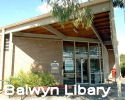
 Sustainable Population Australia, Victorian and Tasmanian branch, Annual General Meeting, 2.00pm Saturday July 12 th 2014, Balwyn Library meeting room. Guest Speaker: Jenny Warfe, spokesperson for Blue Wedges: “Politics, Population and Ports.” NOMINATIONS WELCOME - ALL POSITIONS!
Sustainable Population Australia, Victorian and Tasmanian branch, Annual General Meeting, 2.00pm Saturday July 12 th 2014, Balwyn Library meeting room. Guest Speaker: Jenny Warfe, spokesperson for Blue Wedges: “Politics, Population and Ports.” NOMINATIONS WELCOME - ALL POSITIONS!

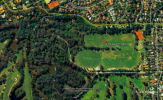 Ivanhoe’s much loved Chelsworth Park, on the Yarra flood plain near the southern entrance to Banyule, is currently being considered for a 20 +10 year Commercial Lease between Banyule City Council (BCC) Ivanhoe Grammar School (IGS) - A commercial entity.
Ivanhoe’s much loved Chelsworth Park, on the Yarra flood plain near the southern entrance to Banyule, is currently being considered for a 20 +10 year Commercial Lease between Banyule City Council (BCC) Ivanhoe Grammar School (IGS) - A commercial entity.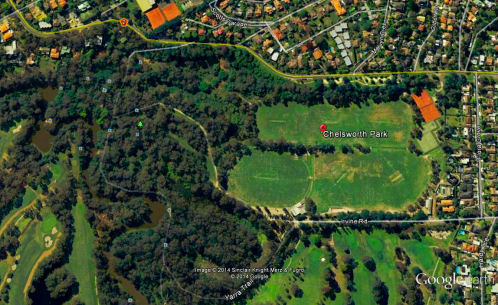

 The admirable tenacity and personal sacrifices of people involved over a long time in fighting the East West Link on the streets and in the courts have finally effected some changes, but the fat lady has not sung yet. The huge Elliott Avenue toll road exchange that threatened the viability of Melbourne Zoo, will not go ahead. Royal Park woodlands near the zoo will also be left standing. What will happen instead is not yet clear and no-one can relax. The East West Link, if it goes ahead in any form, will be a kind of cut-off point for environment and democracy in Melbourne. The huge efforts already expended by the public should have seen the toll way cancelled and forgotten That it survives in some form draws attention to the tragic influence of the growth lobby over our laws and government. (Candobetter.net editorial)
The admirable tenacity and personal sacrifices of people involved over a long time in fighting the East West Link on the streets and in the courts have finally effected some changes, but the fat lady has not sung yet. The huge Elliott Avenue toll road exchange that threatened the viability of Melbourne Zoo, will not go ahead. Royal Park woodlands near the zoo will also be left standing. What will happen instead is not yet clear and no-one can relax. The East West Link, if it goes ahead in any form, will be a kind of cut-off point for environment and democracy in Melbourne. The huge efforts already expended by the public should have seen the toll way cancelled and forgotten That it survives in some form draws attention to the tragic influence of the growth lobby over our laws and government. (Candobetter.net editorial) On 30 June 2014, the Minister for Planning, the Hon. Matthew Guy MLA, issued a press release approving the controversial East West Link Toll Road eastern section. (EW Link)
On 30 June 2014, the Minister for Planning, the Hon. Matthew Guy MLA, issued a press release approving the controversial East West Link Toll Road eastern section. (EW Link) 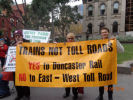 Congratulations to all who organised, prepared, worked for and took part in the rally yesterday Saturday 28 June . It was a monumental task and a great celebration of community spirit. What was so impressive was the amazing diversity of groups and spread of ages of marchers and participants.
Congratulations to all who organised, prepared, worked for and took part in the rally yesterday Saturday 28 June . It was a monumental task and a great celebration of community spirit. What was so impressive was the amazing diversity of groups and spread of ages of marchers and participants.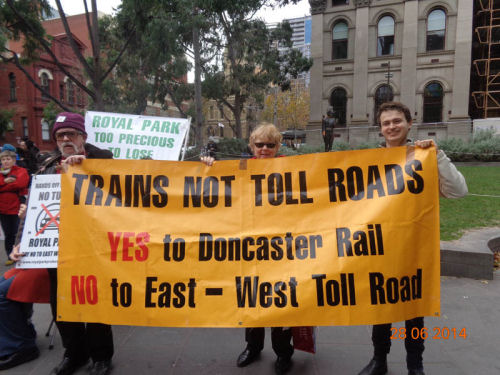 One leader of a community group who has been to lots of protests speaks for many when she commented yesterday after the march in an email:
One leader of a community group who has been to lots of protests speaks for many when she commented yesterday after the march in an email: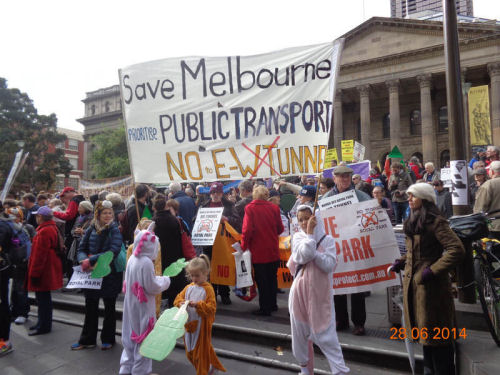
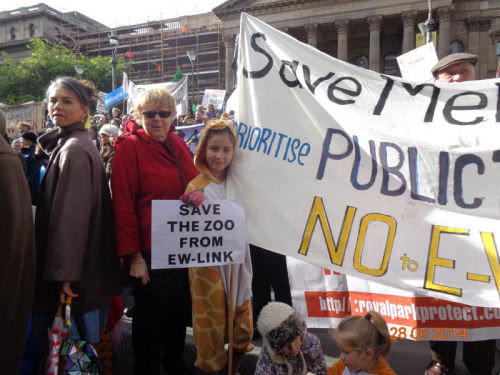
 Tomorrow, Saturday 28 June 2014, thousands are expected to pour onto the streets to take a final stand against the monstrous $14 billion East West Link (EW Link) project about to be foisted on the long suffering people of Victoria by - in our view - the incompetent and increasingly unpopular Napthine Government. Demands of the rally are: scrap the E W Link Toll Road; rip up the contracts if/when signed; and invest in public transport.
Tomorrow, Saturday 28 June 2014, thousands are expected to pour onto the streets to take a final stand against the monstrous $14 billion East West Link (EW Link) project about to be foisted on the long suffering people of Victoria by - in our view - the incompetent and increasingly unpopular Napthine Government. Demands of the rally are: scrap the E W Link Toll Road; rip up the contracts if/when signed; and invest in public transport. Additionally the call has gone out for the Coalition to make the EW Link an election issue and to resist signing contracts before “the people” have spoken. Protestors will rally outside The State Library at the corner of Swanston and Latrobe Streets by 1 pm tomorrow, hear speeches and then march to Flinders Street Station.
Additionally the call has gone out for the Coalition to make the EW Link an election issue and to resist signing contracts before “the people” have spoken. Protestors will rally outside The State Library at the corner of Swanston and Latrobe Streets by 1 pm tomorrow, hear speeches and then march to Flinders Street Station.
 Video of William Bourke's speech inside. William Bourke is the President of the Sustainable Population Party. In this speech he covers a broad range of issues relevant to the population debate including: political donations and the power of vested interests, growth lobby spin, the world's biggest tower, GDP, Victoria's deteriorating economic base, the economic importance of natural capital, single issue politics, and a potential way forward for the population debate through a national vote by plebiscite.
Video of William Bourke's speech inside. William Bourke is the President of the Sustainable Population Party. In this speech he covers a broad range of issues relevant to the population debate including: political donations and the power of vested interests, growth lobby spin, the world's biggest tower, GDP, Victoria's deteriorating economic base, the economic importance of natural capital, single issue politics, and a potential way forward for the population debate through a national vote by plebiscite.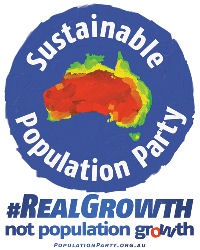
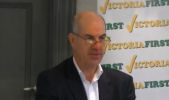
Recent comments